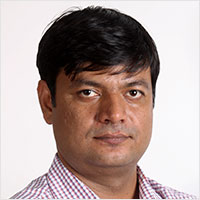Opinion Tweaking IIT entrance: wrong diagnosis,wrong prescription
Take away their (IITs/NITs/IIITs) luxury to select,force them to compete with others to attract.
Take away their (IITs/NITs/IIITs) luxury to select,force them to compete with others to attract. Build IIT-equivalents in medicine,law,commerce,art,social sciences,humanities
It began as an in-house debate within the IITs,that students coming through JEE were no longer as exceptional and talented as before. The villain was quickly identified: coaching classes that promote drill and rote rather than thought and creativity. So the governments policy prescription: lets underline the importance of the schooling system which ostensibly promotes original thinking,lets tweak the entrance examination to factor in Class XII marks.
The entire debate revolves around students who take the IIT entrance: less than 6 per cent of the 8 million students who take the Class XII exam each year. But more of that later,first a story from The Indian Express,reported last month. About 16-year-old Ashutosh,who ranked No 2 in the UP Board Class XII examination. He woke up at 4 am every day,rode his bicycle 3 km from his village to Mohan,a small town in Unnao district. Then he took a three-wheeler to Lucknow more than 30 km away. Then he walked 2 km from the taxistand to his school in Rajajipuram (Lucknow) to reach there by 7.30 am. Ashutosh took the AIEEE (for entrance to NITs),but his real target,he said,is next years IIT-JEE.
Consider this: this student,who passed Class X with 79.5 per cent from a government school in Unnao,chose a private school 30 km away in Lucknow for his Class XII. Although he appeared for AIEEE,NITs,and IIT-JEE this year,he appears to have decided that he will try JEE next year again. His father,a tractor spare parts shopowner in Mohan,is likely to use his savings to keep his son out of university and enrol him in some coaching class.
You will find similar stories across more than 65,000 higher secondary schools in the country and these raise key questions: why did Ashutosh prefer a private school over a government school? Why do students and their parents go to such lengths as to exhaust their meagre savings to pay for coaching even after a good Class XII score? Will factoring in Class XII marks change this? The fact is that reforming the IIT entrance is way off the mark when it comes to solving the original crisis: the school system.
First,the data. IIT-JEE aspirants constitute only a fraction of the total number of students taking the Class XII examination across the country. A total of 4.79 lakh students took the IIT-JEE this year. This number includes many who graduated from Class XII last year. So,the number of Class XII students appearing in IIT-JEE is even lower than this number. Even if one assumes all of them are from Class XII,this number works out to be less than 6 per cent (5.79 per cent) of students enrolled in Class XII. All the debate ignores the 94 per cent.
Also,no one spares a thought for the 40 per cent of students who take Class X but simply vanish by the time their cohorts reach Class XII (all data is from HRD records).
Coming to coaching classes. Forget the 40 per cent weight (envisaged under the one nation,one test principle),even if Class XII scores get 100 per cent weight,it wont wipe out coaching classes. For the simple reason that there are too many good students vying for too few seats available in the quality higher education system. It begets anxiety among students and their parents to leave no stone (coaching class) unturned to make it. It is a supply problem. The number of seats (about 10,000 in IITs) falls far short of students (about 20,000 selected for counselling) found suitable to take that course.
The IITs/ NITs/ IIITs,for their part,should not be faulted for being so selective about who they choose. They even go to the extent of differentiating one from the other through separate entrance examinations. They even strive to maintain a hierarchy among them,only to select the best.
Why use one nation,one test to demolish the healthy competition between them to attract the best? One can argue that too many tests put too much stress on students. But ask all the Ashutoshes across all higher secondary schools. They might not be sure of getting past IIT-JEE,but they remain hopeful either about AIEEE or about some other entrance exam down the ladder. Many of the students would not like to put all their eggs in one basket.
A more robust solution would be to enhance the supply of quality seats at the undergraduate level,not only in engineering or medicine but also in law,commerce,humanities and social sciences. Take away their (IITs/ NITs/ IIITs) luxury to select from the plentiful and force them to compete with others to attract the most suitable. This will also iron out the skew that these handful of institutions create.
The institutional response to the hegemony of the IITs lies in creating similar international brands in other streams: humanities,law,commerce,social sciences among others. This will force them to compete to attract suitable students. This,in fact,will revive interest in an interdisciplinary school curriculum instead of the current distortion towards Physics-Chemistry-Math/ Biology. The bottomline is that,first,it is not part of the IITs/ NITs/ IIITs mandate to strengthen the school system; second,a change of examination pattern,as is being envisaged,is not going to revive the school system.
The task of reviving secondary and higher secondary education,to give it the weight it deserves,is the biggest challenge to the system today. Tweaking the IIT entrance exam or doing away with marks in Class X is not going to make any difference. Its not worth Kapil Sibals time or effort to lose his sleep over IIT graduates. The 94 per cent need him more.
(Disclosure: The writer is a graduate of IIT Bombay. He went to HRDs pace-setting Navodaya Vidyalaya and attended coaching classes before he took the JEE) ravish.tiwari@expressindia.com




